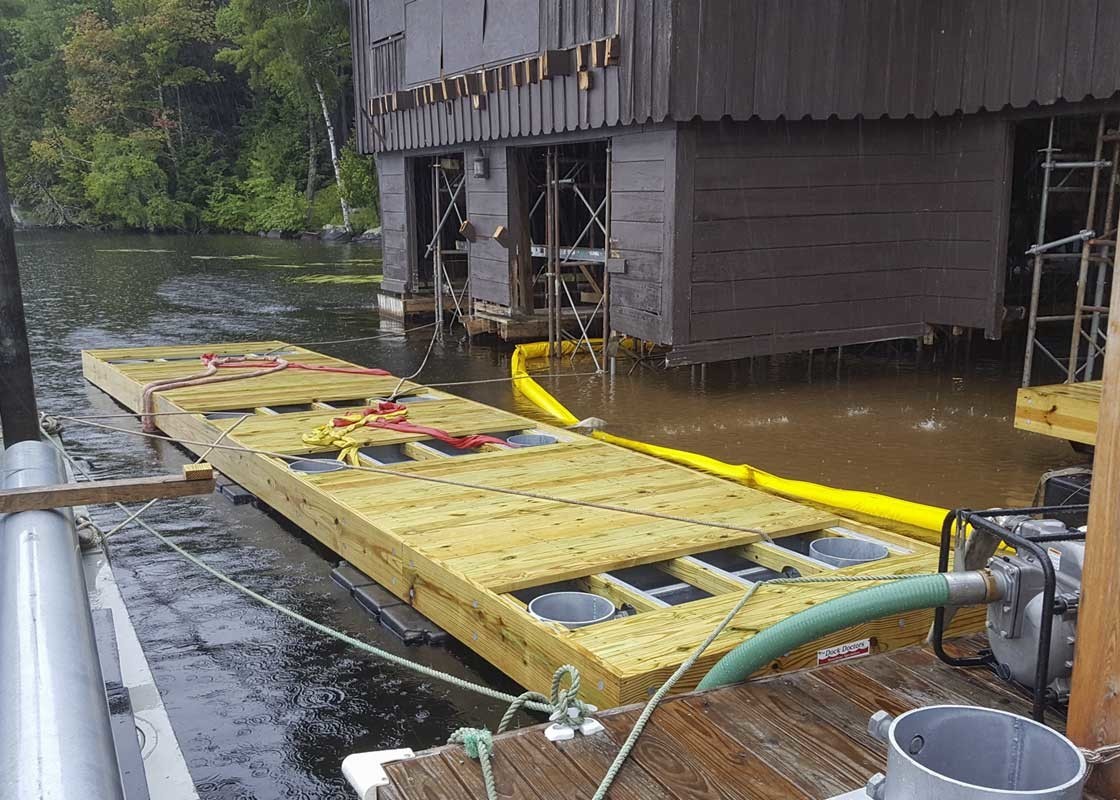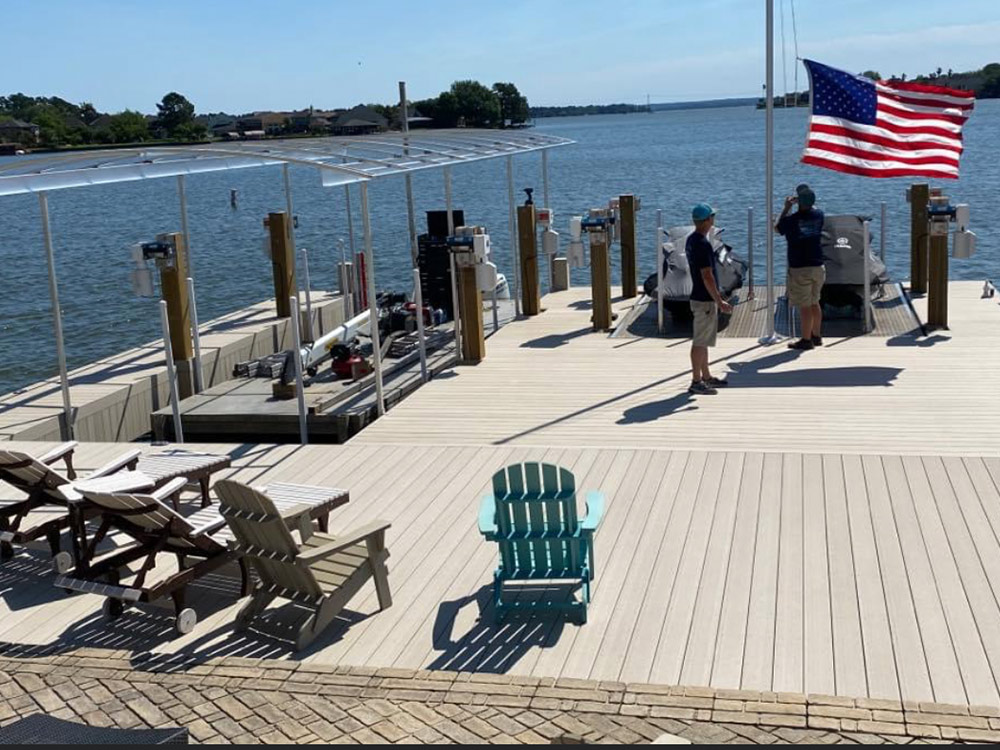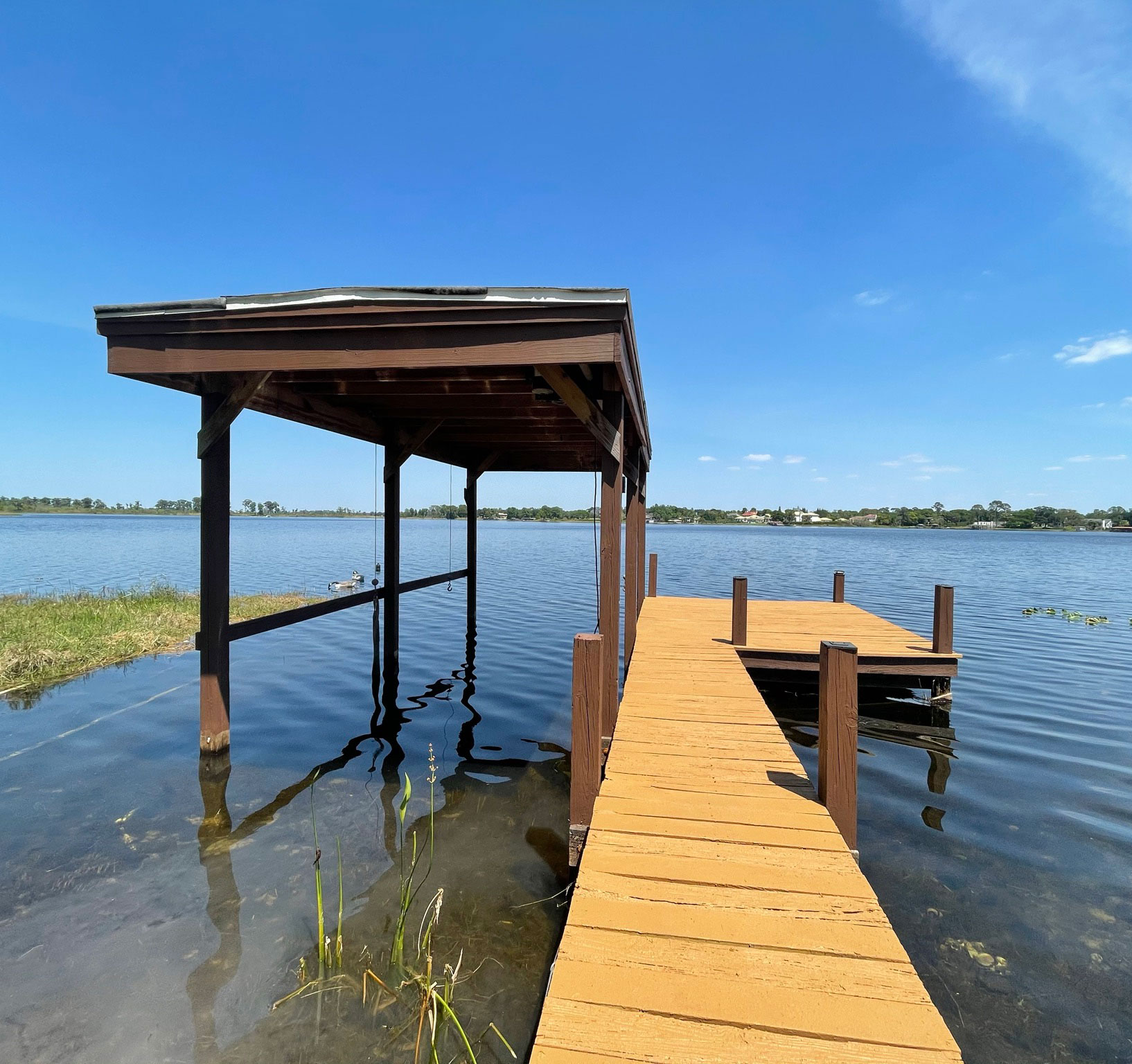Expert Insights on Resilient Dock Repairs Solutions
Expert Insights on Resilient Dock Repairs Solutions
Blog Article
Just How to Address Common Dock Repair Service Issues for Safe Water Tasks

Identifying Common Dock Issues
Determining common dock problems is essential for preserving the performance and security of your beachfront building. Routine examinations can help reveal troubles prior to they come to be severe, ensuring both the longevity of the dock and the safety of those who use it.
One more common trouble is the degradation of flotation protection devices. These devices are vital for maintaining the dock buoyant, and any type of damage or punctures can trigger the dock to list or sink. Regularly examining for leakages or waterlogged drifts can preempt extra significant problems.
Additionally, algae and barnacle buildup on the dock's surface area can develop hazardous and unsafe conditions. This biofouling not only poses a risk to customers yet can also speed up the wear and tear of the dock materials.
Last but not least, checking for signs of corrosion on metal components is essential. Rust can jeopardize the honesty of the dock's framework, making it hazardous. By consistently identifying these common dock issues, you can ensure that your dock continues to be protected and practical for several years ahead.
Repairing Rotting Timber
When resolving the concern of rotting wood on your dock, it is vital to act promptly to stop more damage. Begin by completely evaluating the whole structure to recognize all influenced locations. Make use of a screwdriver to probe the wood; if it sinks in conveniently, the wood is most likely decomposed and needs immediate focus.
Be sure to reduce back to healthy and balanced, solid wood, ensuring you get rid of all jeopardized material. After removal, deal with the remaining timber with a wood preservative to protect against future rot.
Next, change the gotten rid of areas with marine-grade lumber or pressure-treated wood, which are more immune to water damage. Protect the brand-new pieces with galvanized or stainless-steel bolts to avoid deterioration. Additionally, applying a water resistant sealant to the new wood can supply an extra layer of protection.
Safeguarding Loose Boards
Just how do you ensure your dock stays secure and practical for all its users? One vital element is safeguarding loose boards, which can or else pose significant hazards. Loosened boards not only enhance the danger of stumbling but can also compromise the architectural stability of the whole dock.

For reinstallation, utilize stainless or galvanized steel screws, as these products offer exceptional resistance to deterioration in aquatic settings. Ensure the screws are long enough to pass through deep right into the underlying support structure, yet not as long that they stick out via the dock's surface area. Pre-drilling pilot openings can aid protect against the timber from splitting.
Finally, keep a normal evaluation schedule to identify and attend to any brand-new concerns quickly. By safeguarding loose boards efficiently, you add to the general security and long life of your dock, my response making it a dependable platform for water tasks.
Stabilizing Unsteady Pilings
Ensuring the stability of unstable pilings is extremely important to preserving a safe and functional dock. Unsteady pilings can endanger the entire structure, posturing substantial dangers to users and potentially resulting in expensive repair work. The primary step in supporting these essential parts is a complete inspection. Check out the pilings for indications of rot, damages, or changing. Make use of a degree to check for vertical placement and guarantee they are driven deep sufficient right into the substrate to supply ample support.
If the pilings are found to be unpredictable, one efficient approach for reinforcement is using additional bracing. Cross-bracing with treated lumber or galvanized metal can dramatically boost security. Anchor the dental braces firmly to both the pilings and the dock structure to distribute lots equally.

Regular maintenance and routine review of the pilings' stability are vital to ensuring long-lasting dock safety and capability.
Replacing Rusty Equipment
Resolving unsteady pilings is just one aspect of keeping a dock's integrity; one more important issue is replacing rustic equipment. Gradually, exposure to moisture and salt can lead to the oxidation and rust of bolts, brackets, and screws, jeopardizing the whole framework's safety. Routine examination for corrosion is crucial, particularly after severe weather condition or seasonal adjustments.
When rusty hardware is recognized, immediate activity is called for. Begin by picking marine-grade stainless-steel or galvanized equipment, both developed to stand up to the extreme aquatic setting. Make sure that you have the proper devices, such as wrenches and screwdrivers, to safely remove the old, rusty pieces without creating more damages to the dock.
After removing the rustic equipment, completely tidy the affected areas to eliminate any type of recurring corrosion or debris. Apply a rust-inhibiting primer to subjected steel surface areas prior to mounting the brand-new equipment. Tighten all fixtures safely to avoid future loosening, and regularly evaluate the fittings to make sure continuous stability.
Changing corroded equipment not just prolongs the dock's lifespan yet additionally substantially enhances the safety of water tasks. By proactively managing corrosion, you safeguard both the structure and its users, guaranteeing a protected and satisfying waterside experience.
Conclusion
Routine assessments and maintenance are essential to address common dock repair service issues and make sure secure water Visit Website activities. By identifying and correcting troubles such as rotting wood, loose boards, unstable pilings, and rustic equipment, architectural stability and longevity can be considerably boosted. The application of marine-grade products and suitable therapies even more fortifies the dock versus environmental stress factors. Such proactive steps add to the total safety and performance of dock frameworks, cultivating a secure setting for water-based straight from the source tasks.
Making sure the safety and security of water activities hinges considerably on the proper upkeep and repair of docks (Dock Repairs). These gadgets are important for maintaining the dock resilient, and any damage or slits can cause the dock to listing or sink. By regularly identifying these common dock issues, you can make certain that your dock stays secure and practical for years to come
Ensuring the security of unsteady pilings is critical to maintaining a functional and secure dock.Regular examinations and upkeep are vital to attend to usual dock fixing concerns and make sure risk-free water activities.
Report this page